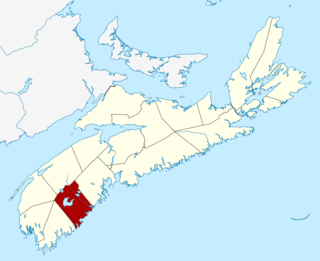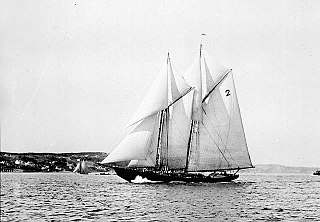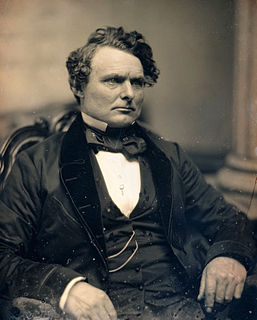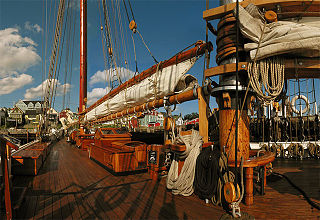This article includes a list of references, but its sources remain unclear because it has insufficient inline citations .(March 2013) (Learn how and when to remove this template message) |
Amos Parker Pentz (December 11, 1849 – December 11, 1922) was a Canadian shipbuilder from Shelburne, Nova Scotia. He was noted for his fast and innovative designs of fishing schooners and trawlers.

Shelburne is a town located in southwestern Nova Scotia, Canada. It is home to the Bowers Meadows Wilderness Area.
He was born in Beach Meadow, Queens County, Nova Scotia, to Martin Pentz and Eliza Jane Maxwell. From a young age, Pentz had always taken a strong interest in ships. As he became older, his passion for ships turned into his livelihood. The combination of his talent for woodwork, and knowledge of ships, created a foundation for a lifetime of success in his field of work. He began his career in 1872 as an itinerant ship builder. He slowed his career down briefly around 1891 when he married Annie Matthews (on October 24, 1891). Pentz and his family eventually moved on to Shelburne to continue his work with shipbuilding. He was employed at the Joseph McGill Ship Yard, where he set a new example for what skills a master ship builder should have.

Queens County is a county in the Canadian province of Nova Scotia.
Over is lifetime he produced an impressive one hundred and forty-one ships. In 1901 the Harbinger was built, and in 1902 the Messenger was completed, both of these ships were steam trawlers, and were the first steam powered fishing vessels build at these docks. The Arbutus, built in 1903, was the first auxiliary powered fishing schooner built in the province of Nova Scotia. In 1908, and then 1910, the Albert J. Lutz and Dorothy M. Smart were built. These two ships were renowned for their remarkable speed and celebrated by authors such as Frederick William Wallace. Both latter vessels competed for the Britain Cup in Nova Scotia's fisherman's regatta, which was held in Digby, Nova Scotia in 1911. [1]
Frederick William Wallace was a journalist, photographer, historian and novelist. He was the author of Wooden Ships and Iron Men, a now-classic 1924 book about the last days of the Age of Sail in Maritime Canada. Born in Glasgow, Scotland, he initially worked as a clerk but turned to the sea as a journalist of the fishing industry which later led to historical work. Wallace served in World War I as commander of a Q-Ship. He died in Montreal.

Digby is a town in southwestern Nova Scotia, Canada. It is the administrative centre and largest population centre in Digby County. The town is situated on the western shore of the Annapolis Basin near the entrance to Digby Gut, which connects the basin to the Bay of Fundy.
Not only was he a fine ship builder, but he also was an inspiring mentor to James Havelock Harding who grew to become another one of Shelburne's best ship builders, he eventually moved to the United States to continue his career. Amos Pentz died December 11, 1922.
James Havelock Harding, was a master shipwright and shipbuilder who worked at Shelburne, Nova Scotia. He was born in Queens County, Nova Scotia, Canada in 1883.








